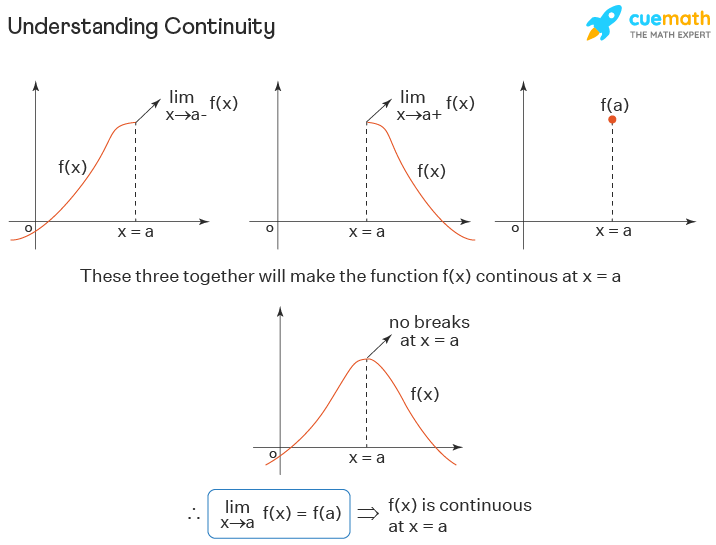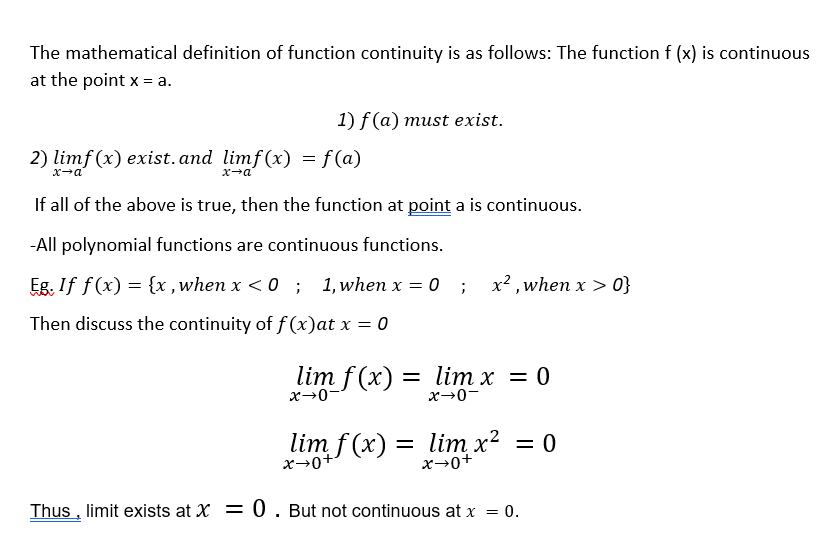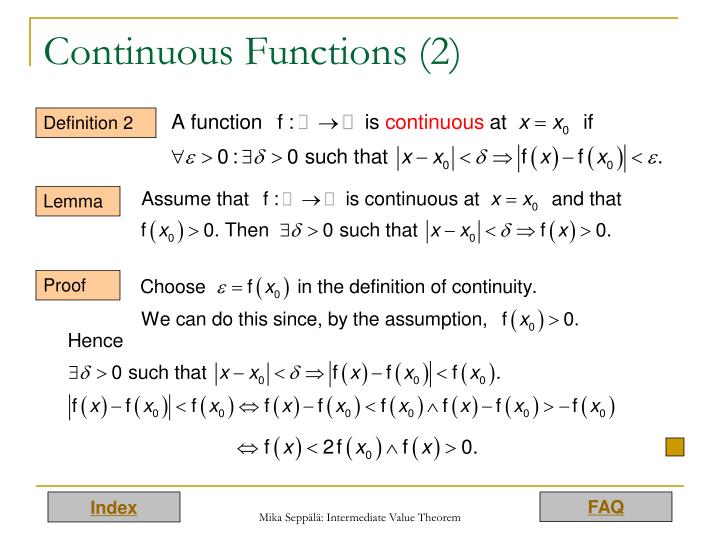Reference




OpenAI's Answer
In calculus, a continuous function is a real-valued function whose graph does not have any breaks or holes. More precisely, a function ( f(x) ) is considered continuous at a point ( x = a ) if the following conditions hold:
- The function exists at ( x = a ).
- The limit of the function as ( x ) approaches ( a ) exists.
- The limit of the function as ( x ) approaches ( a ) is equal to the function's value at ( x = a ).
These requirements ensure that a small change in the input leads to a small change in the output, implying there are no abrupt changes in value (discontinuities) within the function's domain.
For more details, you can refer to the Wikipedia article on Continuous Functions.
Here are some illustrative images:


Follow Up
Related
Hazme la introducción de un informe que contará Marco teórico que tendrá Introducción a los Límites,
Can you explain the significance of process calculus in modeling concurrent systems?
What is the importance of Peirce's existential graphs in predicate calculus?
How does the Fundamental Theorem of Calculus connect differentiation and integration?